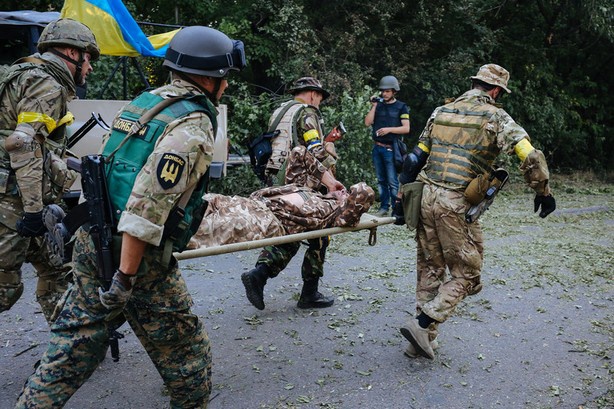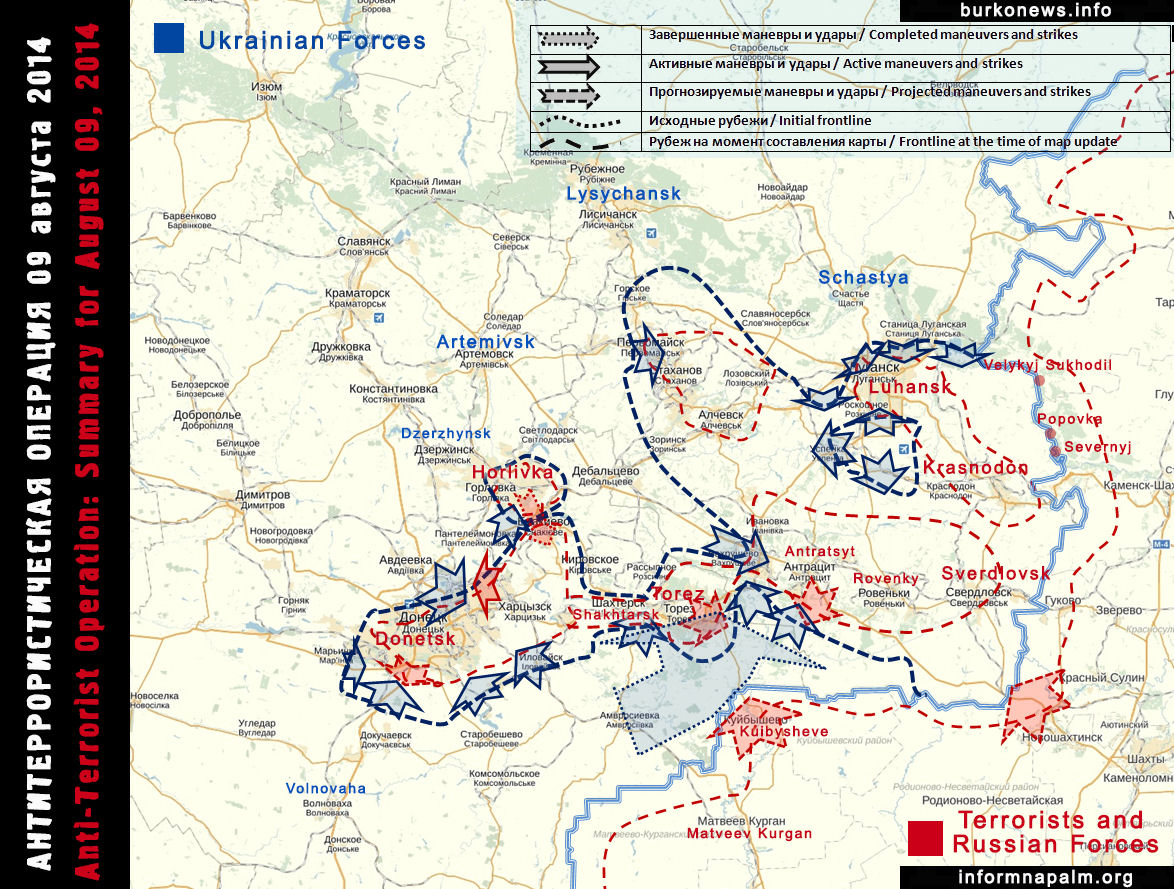By Olena Bilozerska
“The current situation in Savur-mohyla has been for me a singular opportunity to witness the depths of hell in my lifetime,” writes Olena Bilozerska on August 12, 2014, “and to return alive from all that.” She is quick to add a remembrance to those who did not return unharmed, namely four killed from their battalion, along with nine wounded. “At best, the battle is impossible to describe,” she writes. “I was there at Savur-mohyla for only a day and a half, but that was enough for me.” She was initially stationed at a checkpoint at a nearby village, Amvrosiyivska, “our island of safety surrounded by enemy territory.”
She describes a protracted battle, “so much so that the outlook was unsettling.” Her job began with stop checks of vehicles, then to help with the wounded once they began to arrive the next day. “I was lucky to see only the wounded, because it was sheer hell in Savur-mohyla at this time. Our army recaptured Savur-mohyla on the night of August 7-8, and were able to gain access to the centre of the town. Our assignment for the Ukrainian Volunteer Corps, the soldiers of Pravyi Sektor, was to secure the village of Stepanivka, and to liberate the neighbouring villages.“The first unit, led by Dmytro Yarosh, quickly gained access to Stepanivka, where they stablized their positions. The remainder of our combatants made it to the village of Petrivsk almost entirely without incident. However, for two entire days these two groups were unable to join up with one another. For my part, almost entirely unable to communicate with them, would be on guard at the checkpoint, utilizing those brief moments when there would be internet service available to update my war diary on Facebook.
"Finally, our main forces, under intense mortar fire reached Stepanivka and dug in there. They were so lucky that during this mad dash for Stepanivka no one was harmed. The first of the casualties happened the next day, when my friend, Halychanyn, was wounded, having had both his legs broken. He was wounded under these circumstances: a great number of wounded men were left behind when the army began its retreat. The plan for their evacuation involved using tanks and armoured personnel carriers to assist the medical unit, under the direction of the 5th Independent Battalion, Ukrainian Volunteer Corps (DUK), Pravyi Sektor, in conjunction with the separate unit that was protecting Dmytro Yarosh.
“Unfortunately, it was impossible to reach the wounded through the crossfire of the heavy mortar shelling, rifle fire, and rocket propelled grenades. The medics did manage, however, to race away from that scene in a nearly broken-down vehicle, bringing Halychanyn to the hospital. On their way back, they picked me up at my checkpoint. As you can imagine, it was quite a lively trip, under constant gunfire from the enemy. I did manage to reach Stepanivka and was reunited with my comrades. “And what were they doing? They were holding their own in defence of the town, and from there they began the liberation of the neighbouring village, Saurivka. They faced stiff opposition and made casualties of a great number of “separatists”.
“At this point, however, they were within range of heavy artillery fire. Imagine, if you will, a half-destroyed village, houses abandoned, perhaps a total of 15 residents anywhere to be found. When the shelling begins, they seek shelter together, for mutual reassurance, and then after to tend to such matters as fetching water. What they see all around them are burned-out shells of tanks, ours and the enemy’s, reminiscent of old Soviet movie scenes about war, burning military debri along the roadways. Scattered around are the control systems of these weapons, removed and destroyed by the retreating enemy.
“From where the ‘separatists’ have regrouped, they display their firepower, sending their shells in our direction. In the towns of Dmytrivka and Torez stand (but not idly), their “hrad” weapons. These systems are constantly active. They are also being fired from Russian territory, and this is the worst part, because there are countless missile weapons further away from us. As our commander says, from that distance you cannot hear them launched, but you can only hear them as they approach as “incoming,” at which point it might be too late to seek shelter.











